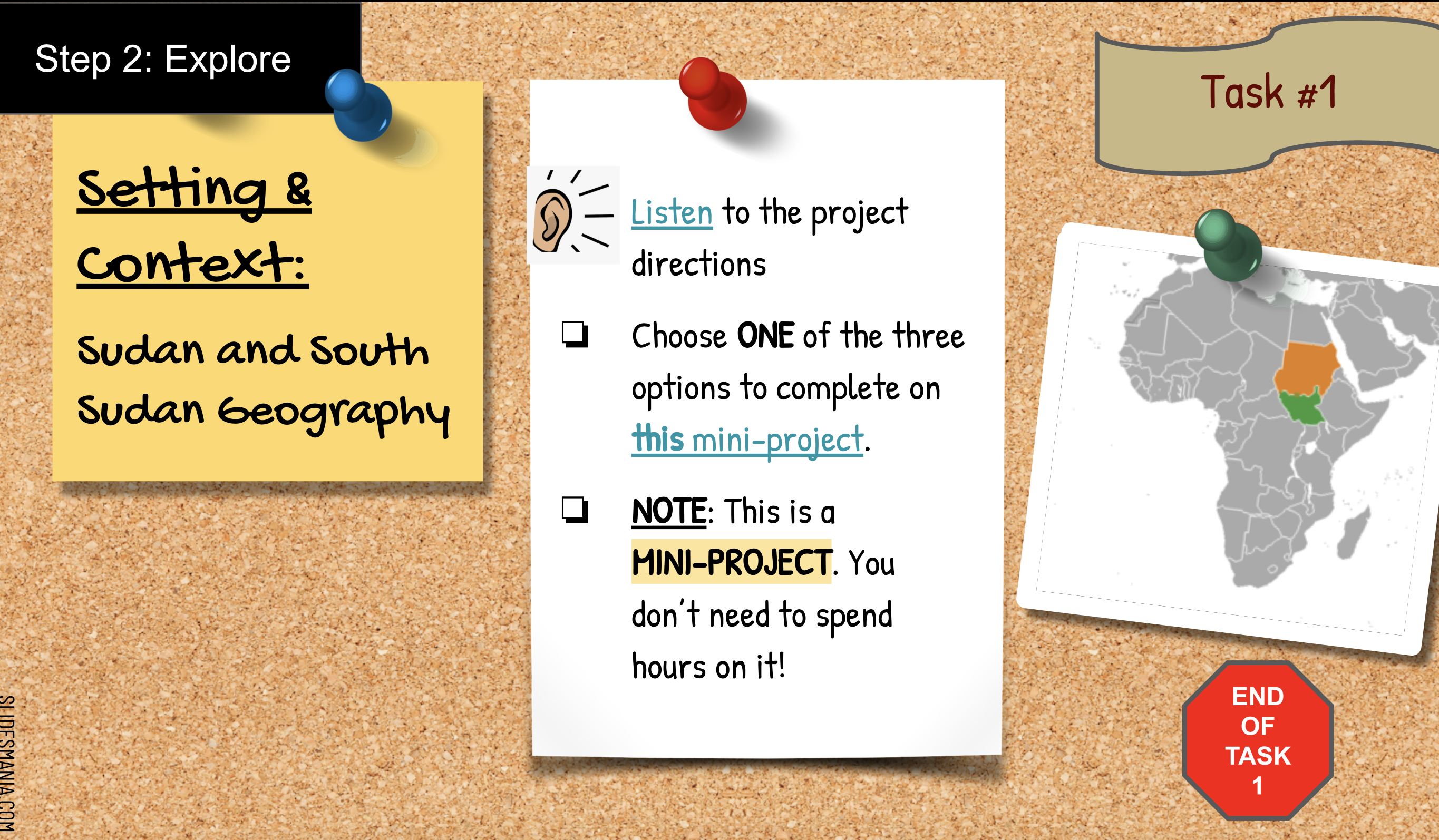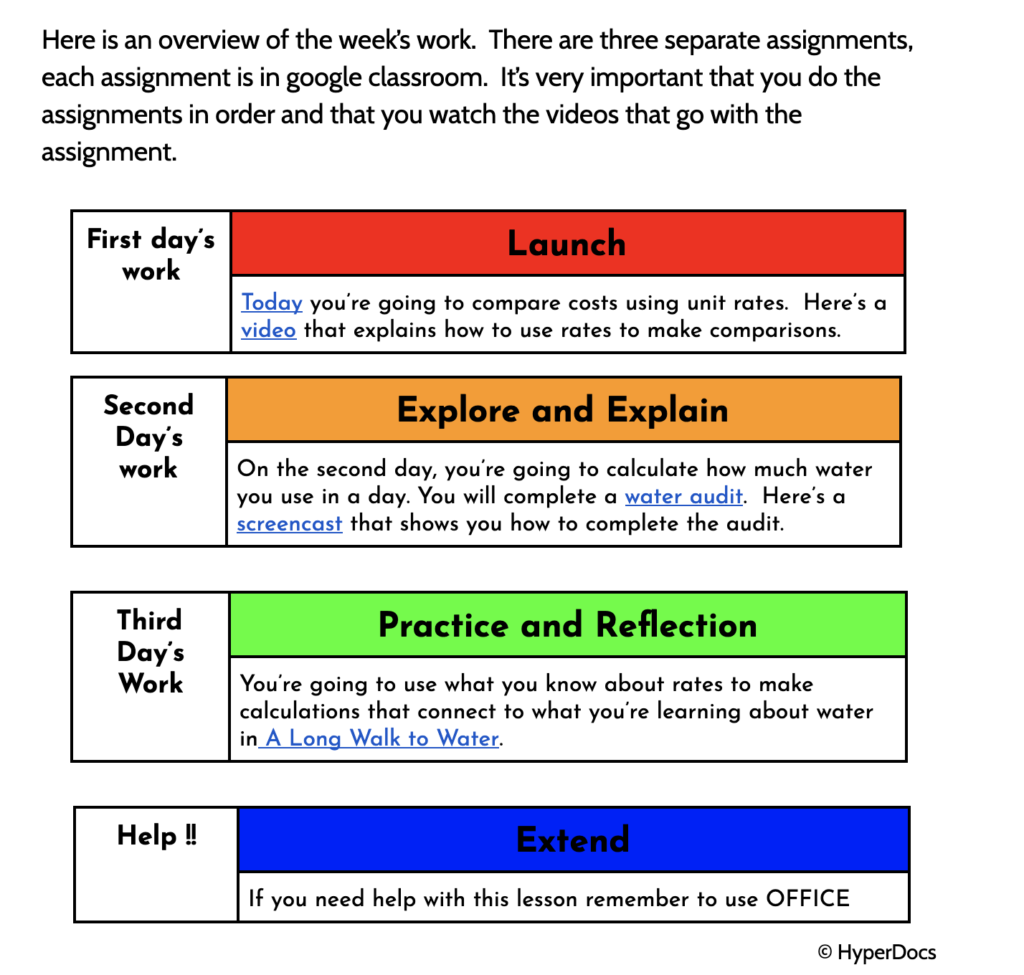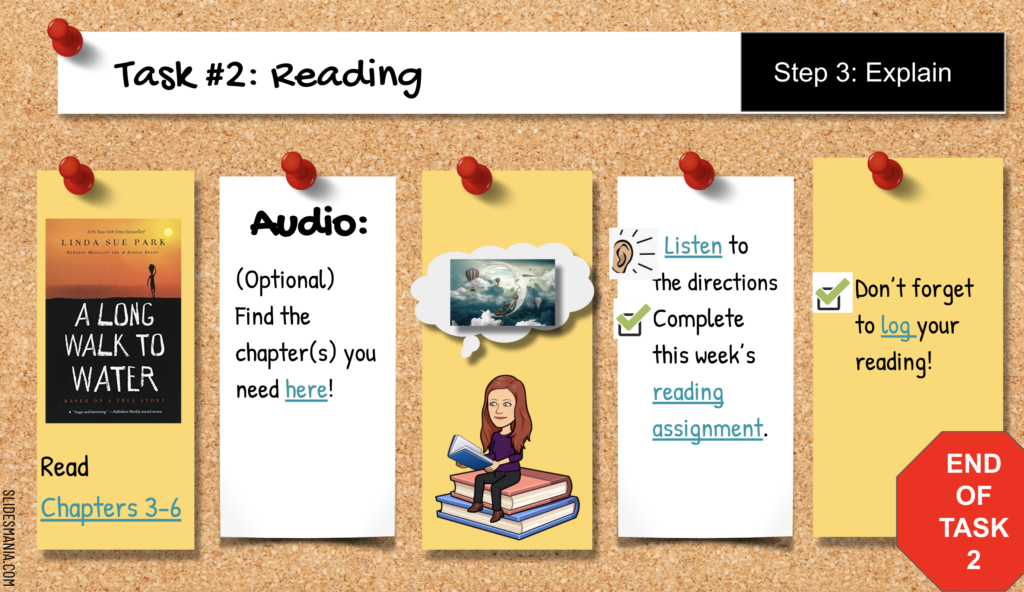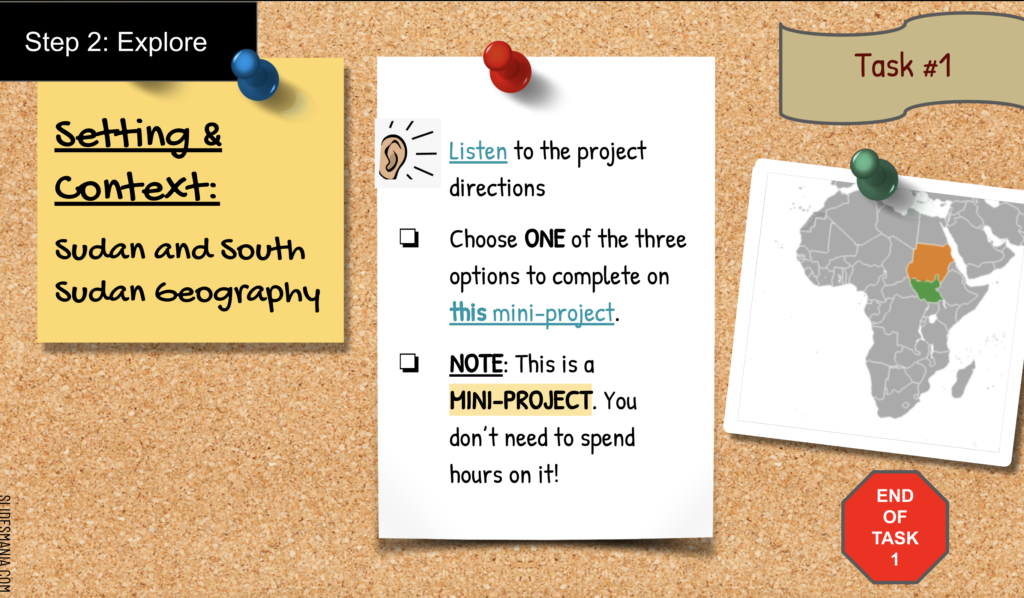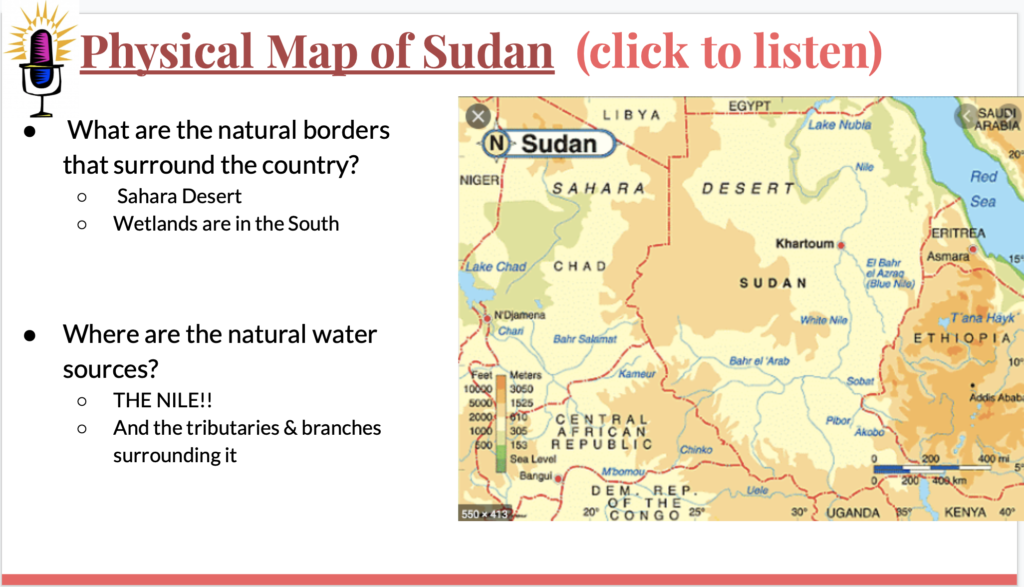Middle level educators at Randolph Union Middle School believe integrated and thematic learning help students see their place and role in the world. And a shift to remote learning meant they’d simply have to be more creative and coordinated to make it work!
Given the challenge to provide instruction remotely, the team agreed they needed to make learning expectations manageable and meaningful. A thematic unit became the focal point to end this year well for their students. And the collaborative effort was worth it in more ways than one.
Why implement thematic/integrated units?
Here’s what the 7th grade teacher team believes:
“When curriculum is integrated, it is no longer a list of skills and information that must just be learned for a test. When learning is tied to a specific theme, issue, problem, etc., students are able to naturally see the interconnected way information and skills from the different subjects work together. The study of themes and world problems relevant to the lives of students increases their motivation and engagement with the material.”
In addition, developmentally appropriate, relevant integrated curriculum:
- fosters collaboration
- deepens students’ critical thinking abilities
- highlights transferable skills

Launching remote learning through a thematic unit: Is access to water a basic human right?
Once all agreed on the commitment to keep the thematic integration going, they all selected the essential question. Their students would end their 7th grade year learning enough about water from the different discipline lenses to answer the question: Is access to water a basic human right?
Each week, the team shared an overview calendar of assignments with students and families. Students recognized that, although they were doing school work from each subject area, they were working on the Water unit as a unifying force.
Transforming teaming routines
Each member of the team used Google Classroom to deliver instructional materials and receive student work. Yet, they recognized, an efficient workflow through Google Classroom wasn’t enough to help students and their families navigate assignments remotely. Each crafted hyperdocs containing the week’s worth of work. That way, learners could see the scope of required work and plan accordingly. Here is an example of a math assignment hyperdoc:
In addition, the team created a website for easy access to all assignments and supporting resources.
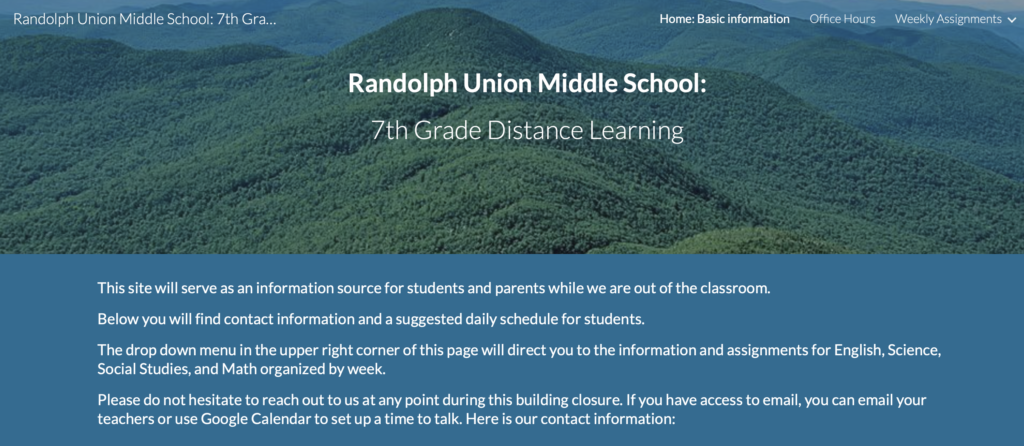
The best benefit to the teachers on the team in this thematic alignment work? It incentivized them to streamline delivery for students, and to plan instruction and assessment practices in a way they’d never done before.
The power of teacher collaboration
Weekly they carved out time as a team to share drafts of the remote lesson plans they were getting ready to launch this thematic and integrated learning unit. Tuning together meant that each was able to hear feedback from their colleagues about content, work load, and clarity of delivery.
- Who might need to scale back?
- Who might need to add more details, more diagrams, visuals and scaffolds to support self-direction?
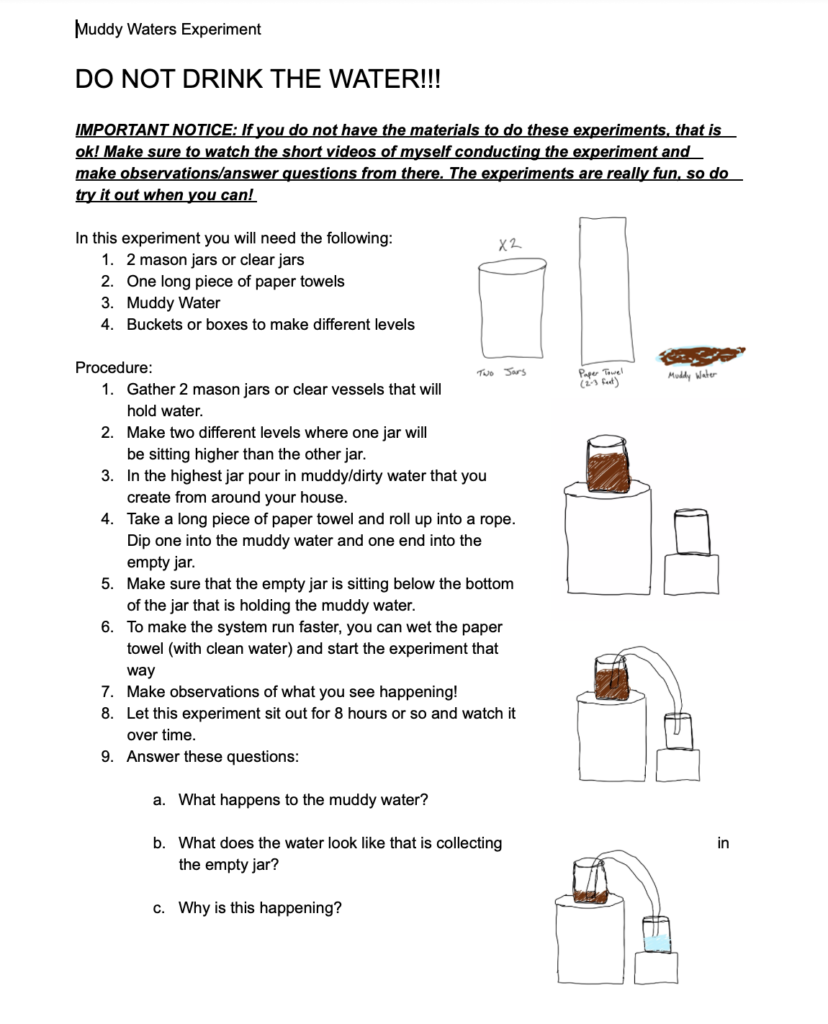
Example of science activity improved to include diagrams & time-lapse video
Teaming at its best
Since they saw the workload for the week assembled in one place, they could make group decisions about the reasonableness of the student workload.
Example from group feedback:
- hyperdoc formatting ideas included adding icons to slides to indicate if students would need to listen, read, or do.
- include time recommendations for assignments so students could plan effectively
- shorten instructional videos into chunks and clarify instruction
Other benefits of taking the time to tune together
Weekly tuning helped them be better advisors. During office hours each team member could support their students’ struggles and answer questions from other classes. Why? Because they were familiar with their colleague’s instructional plans and expectations in a way they’d never experienced before.
Tuning work can be intimidating. It takes time out of incredibly packed days. Yet, because of its impact, they value it above almost every other meeting at this point in this tumultuous year. Never again, Alyssa Matz the social studies teacher on the team shared, will she go back into a planning silo. She’s recognized the immense value in collaboratively sharing and critiquing lesson planning around a thematic topic for her growth and for the benefit of her students. The team agreed with her to never go back to individualized, discipline specific instruction! How cool is that.
Reflecting on thematic remote instruction
Looking back, the team saw students making connections, voluntarily without prompting, between content areas. Helping student make connections is a primary goal of the humanities curriculum. The intentional alignment of content clearly affected learners’ ability to synthesize. And the intentional integration gave students a framework to build the new learning upon. They recognized how key ideas in the shared reading of A Long Walk to Water, the science experiments on the water cycle, and the study of border disputes all played a role in their assignments. Even in math!
All agreed the power of teaming in this way was a game changer.
How might you incorporate thematic instruction in your work with students?


